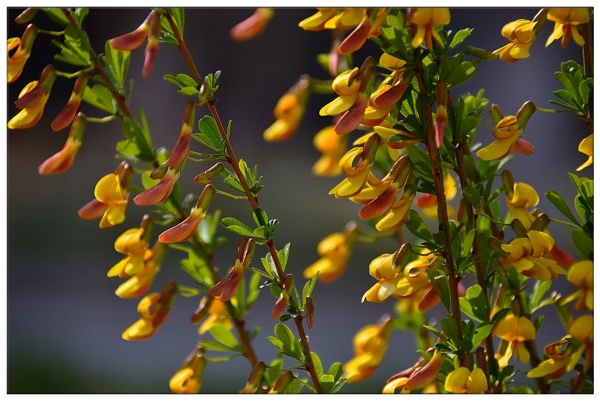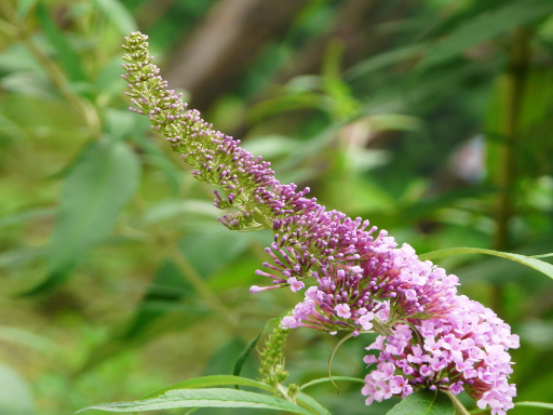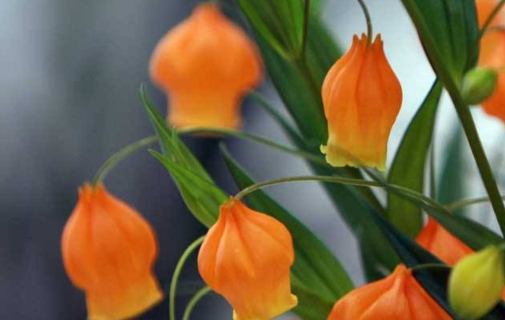Matters needing attention in breeding Caragana
When fertilizing Caragana, we must pay attention to controlling the concentration of fertilizer, and we should not apply too much fertilizer at will just because we expect it to grow rapidly, which will cause damage to the roots of Caragana. In addition to not watering too much, we should also choose flowerpots with good drainage. In addition, the sandy soil with good drainage and fertile soil is the best choice.

Breeding methods and matters needing attention of Caragana
Culture methods of Caragana, temperature and light
Caragana likes light and cold, and likes a warm environment. Caragana can be placed in a place with plenty of sunshine and smooth air to maintain and give enough sunshine. But the summer is hot and hot, and the sun is strong, so it is necessary to shade Caragana and keep it in a semi-shady place. In winter, you can put Caragana in a higher temperature indoor maintenance, try to put in a place with bright light. In the area south of the Yellow River, you can also spend the winter outdoors, preferably buried in the soil with pots.
Water and fertilizer management
Caragana in daily maintenance, watering should follow the principle of "no dry, no watering, watering thoroughly" principle, keep the basin soil moist, can prolong the flowering period. It is better to apply fertilizer with thin fertilizer, but we should also make appropriate changes according to the growth status of Caragana. For example, fertilizer can be applied during the winter dormancy period, liquid fertilizer can also be applied to blossom in spring, and topdressing can be applied after flowering.
Soil and basin change
Caragana usually changes the basin every 2-3 years, and the time to change the basin is in spring. When changing the basin, you can remove the old soil and trim the roots, and replant it. After that, Caragana was placed in the semi-shade to slow the root, and the normal management was restored after rejuvenation.
The best soil for Caragana is deep, fertile and moist sandy loam.
Matters needing attention in Caragana Culture breeding methods
Caragana can be propagated by sowing propagation, cutting propagation, split propagation and striping and other methods.
Pruning
Caragana should be pruned frequently in the process of growing. After falling leaves in winter, all kinds of diseased branches, dead branches and rotten branches can be cut off. When the plant grows again in spring, the branches can be more branched by pruning. When Caragana is growing vigorously, cut off the overgrown branches to keep the plant shape beautiful.
Culture methods and matters needing attention of Caragana Caragana
Latin name Caragana korshinskii Kom.
The plant kingdom.
Angiospermae, angiosperm phylum
Dicotyledonous class Dicotyledoneae
Primitive perianth subclass Archichlamydeae
Mu Qiang Wei Mu Rosales
Suborder Rosineae
Family Leguminosae Leguminosae
Subfamily Pteropodidae Papilionoideae
TRIB. Galegeae Huangjiya SUBTRIB. Astragalinae
It belongs to Caragana lobular system Ser. Microphyllae Kom.
Named by and Age Kom, 1909
Caragana korshinskii (scientific name: Caragana korshinskii Kom.) shrub, 1.5 to 5 meters high. The root system is well developed, generally reaching a depth of 5 to 6 meters, the deepest is about 9 meters, and the horizontal extension can reach more than 20 meters. Bark golden, glossy, branchlets grayish yellow, angled, densely silky pilose. Pinnately compound, with leaflets 12-16, oblanceolate or rectangular-oblanceolate, densely sericeous on both surfaces. Flowers solitary, calyx campanulate, Corolla yellow, butterfly, ovary sparsely pubescent. Pods lanceolate or shortly rounded-lanceolate, slightly flat, leathery, dark reddish brown. The seeds are irregularly reniform, light brown, yellowish brown or brown. It is distributed in western Inner Mongolia, northern Shaanxi and Ningxia, and also in Mongolia.
1. Species introduction
Caragana Caragana (Leguminosae) Caragana (Ningxia), White Caragana (Inner Mongolia Ikezhao League), Mao Tiao (Gansu Hexi Corridor), Chagan-Harikana (Mongolia)
Caragana korshinskii Kom. In Acta Hort. Petrop. 29: 351. T. 13. 1909; Leguminosae 356. Figure 352. 1955; Chinese higher Plant Map 2: 412. Figure 2554. 1972; Flora of Inner Mongolia 3: 177. Plate 89 (10-15). 1977; Desert Flora of China 2: 228. 1987.
42a. Caragana Caragana (original variant) plate 13:2-8
F. Korshinskii
Shrubs, sometimes treelike, 1-4 m tall; old branches golden, glossy; twigs white pilose. Pinnately compound leaves have 6-8 pairs of leaflets; stipules hardened into needles on long branches, 3-7 mm long, persistent; leaf rachis 3-5 cm long, deciduous; leaflets lanceolate or narrowly oblong, 7-8 mm long, 2-7 mm wide, apex acute or slightly obtuse, prickly, base broadly cuneate, grayish green, both surfaces densely white appressed pilose. Pedicel 6-15 mm long, densely pilose, articulated in middle and upper part; Calyx tubular-campanulate, 8-9 mm long and 4-6 mm wide, densely appressed pubescent, calyx teeth triangular or lanceolate-triangular Corolla 20-23 mm long, upper petal broadly ovate or suborbicular, apex truncated and slightly concave, ca. 16 mm wide, with short petiole, winged stalk slender, slightly shorter than limb, ear short, toothed, keel with long handle, ear very short; ovary lanceolate, glabrous. Pods flat, lanceolate, 2-2.5 cm long, 6-7 mm wide, sometimes sparsely pilose. Flowering in May and fruiting in June.
Produced in Inner Mongolia (northwest of Yikezhao League, Bayannur League, Alashan League), Ningxia, Gansu (Hexi Corridor). Born in semi-fixed and fixed sand. It is often the dominant species. The type specimens were collected from Ordos, Inner Mongolia.
Excellent sand fixation plants and soil and water conservation plants.
According to the specimen description of northwestern Ordos, Kubuqi Desert and Helan Mountain in Inner Mongolia, the ovary of V. L. Komarov is densely pubescent. This feature was identified in the key to C. microphylla Lam. The main difference. However, in the quoted specimen No. 5, the collector G. N. Potanin recorded that the young fruit was glabrous. In the picture of V. L. Komarov t. 16. F. B, the young fruits of the newly withered flowers are not hairy. We observed a large number of specimens from the producing area, and the ovary was completely glabrous. Therefore, we suspect that the original description is incorrect and we are waiting for the type specimen to be examined.
42b. Short-pod Caragana (variant)
F. Brachypoda Liou f. In Fl. Des. Reip. Pop. Sin. 2: 229. four hundred and forty four。 1987.
Pods short, 1.5-2.2 cm long.
The type specimens were collected from the introduction nursery of Shapotou Desert Science Experimental Station in Zhongwei, Ningxia.
- Prev

Breeding method of buddleja
We usually use three propagation methods, container seedling propagation, hardwood seedling propagation and cuttage propagation. 1. Container seedling container seedling, usually we choose to seedling in spring, peat, decomposed sheep dung, fine sand according to the ratio of 2:1:1 evenly mixed, disinfected into the hole plate or nutrition bag
- Next

How to raise lilies with palace lanterns
The main results are as follows: 1. The soil with loose, fertile and good drainage is selected, and the soil with low acidity is improved by quicklime, which can not only improve the soil, but also kill some soil germs and underground pests. If the alkaline soil is improved with phosphoric acid and peat, the dosage depends on the specific situation.
Related
- Fuxing push coffee new agricultural production and marketing class: lack of small-scale processing plants
- Jujube rice field leisure farm deep ploughing Yilan for five years to create a space for organic food and play
- Nongyu Farm-A trial of organic papaya for brave women with advanced technology
- Four points for attention in the prevention and control of diseases and insect pests of edible fungi
- How to add nutrient solution to Edible Fungi
- Is there any good way to control edible fungus mites?
- Open Inoculation Technology of Edible Fungi
- Is there any clever way to use fertilizer for edible fungus in winter?
- What agents are used to kill the pathogens of edible fungi in the mushroom shed?
- Rapid drying of Edible Fungi

